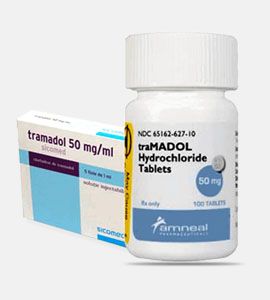Description
Apply with strong acute and chronic pain: in the postoperative period, with injuries, in cancer patients, etc., as well as before operations. For mild pain, the drug is not recommended.
Mode of application:
Adults and children over 14 years old are administered intravenously (slowly drip) 50-100 mg (1-2 ampoules), up to 400 mg (0.4 g) per day. In the same dose is administered intramuscularly or subcutaneously. Inside appoint (with a small amount of liquid) in capsules 50 mg to 8 capsules (0.4 g) per day or as drops - 20 drops each (contain 50 mg of tramadol) to receive in a small amount of water up to 8 times per day.
You can assign tramadol in the form of rectal (for introduction into the rectum) candles containing 0.1 g (100 mg), 1 candle up to 4 times per day. When administered intravenously, it has an analgesic effect in 5-10 minutes, when administered orally - in 30-40 minutes. Valid for 3-5 hours
Overdose:
Symptoms: respiratory depression, up to apnea, convulsions, pupil constriction, anuria, coma.
Treatment: the introduction of naloxone (specific antagonist) in/in, gastric lavage, maintaining vital functions.
Side effects:
Tramadol is relatively well tolerated, does not cause, in usual doses, pronounced respiratory depression and does not significantly affect blood circulation and the gastrointestinal tract. It may, however, cause nausea, vomiting, dizziness, sweating.
Contraindications:
You can not appoint tramadol in acute alcohol intoxication (poisoning); patients with hypersensitivity to narcotic analgesics; patients taking MAO inhibitors. A pregnant appointment should be made with extreme caution. Children under the age of 14 do not prescribe the drug.
The drug should not be used for a long time
Interaction with other drugs and alcohol:
Enhances the effect of drugs that depress the central nervous system (including tranquillizers, hypnotics, sedatives, and anaesthetic drugs), and ethanol. Inductors of microsomal oxidation (including carbamazepine, barbiturates) reduce the severity of the analgesic effect of tramadol and the duration of action. Since carbamazepine increases tramadol metabolism and increases the risk of seizures, the simultaneous use of carbamazepine and tramadol is not recommended. Prolonged use of opioid analgesics or barbiturates stimulates the development of cross-tolerance.



